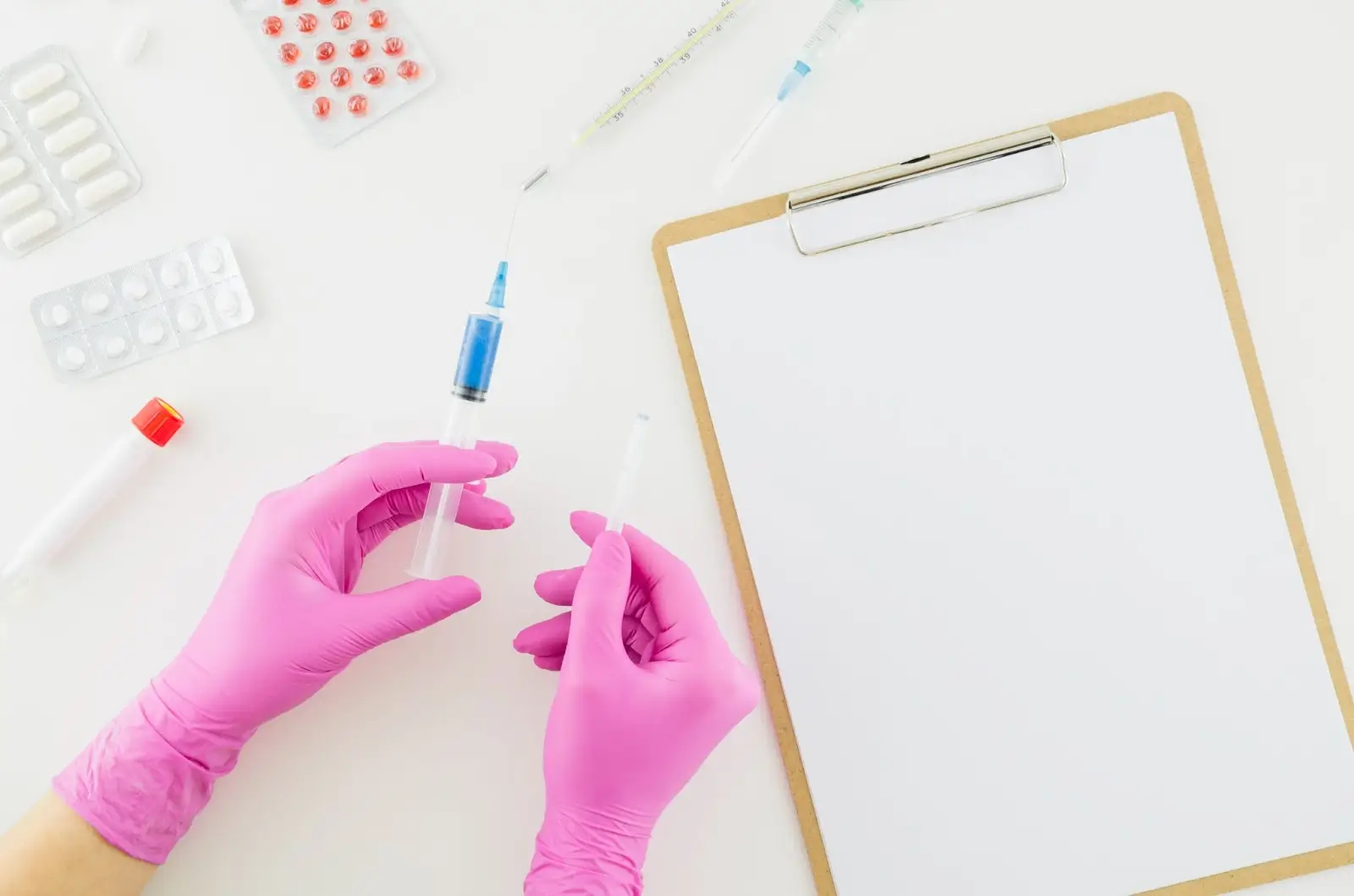Only for Licensed Professionals
Only for Licensed Professionals
.webp)
What is Gardasil?
Nina Petrovic
Last Updated On: August 10, 2025
Imagine being able to prevent up to 70% of cervical cancer cases before they even begin. That’s the power of modern vaccines, especially when it comes to human papillomavirus (HPV), one of the most common sexually transmitted infections worldwide. Most sexually active people will encounter HPV at some point, but now, there’s a way to stay protected before exposure.
Enter Gardasil 9, a next-generation HPV vaccine that guards against nine high-risk and low-risk HPV types, including the ones most commonly linked to cervical, genital, and throat cancers, as well as genital warts. It’s recommended for both girls and boys starting at age 9, with a flexible two- or three-dose schedule depending on age.
In this article, we’ll break down exactly how Gardasil works, how safe and effective it is, who should get it, and why it’s one of the most important tools we have in the fight against HPV-related diseases.
Key Takeaways
- Gardasil 9 is a 9-valent HPV vaccine designed to protect against high-risk and low-risk types of human papillomavirus, including those most commonly linked to cervical, anal, genital, and oropharyngeal cancers.
- The vaccine utilizes virus-like particles (VLPs) to elicit a robust immune response without inducing infection, resulting in sustained antibody protection.
- Gardasil is preventive, not therapeutic. Doctors should give it before exposure to HPV, ideally in early adolescence for maximum benefit.
- The evolution from quadrivalent to 9-valent coverage has expanded protection from four to nine HPV types, now covering approximately 90% of cervical cancer cases.
- In addition to cervical cancer, Gardasil helps prevent genital warts, anal cancer, vulvar and vaginal cancer, penile cancer, and may reduce the risk of HPV-related oropharyngeal cancers.
- Gardasil 9 has FDA approval for individuals aged 9 through 26, with expanded eligibility up to age 45 based on shared decision-making.
- Gardasil is an integral part of national immunization programs in over 125 countries and is a central tool in reducing HPV-related disease burden worldwide.
- While screening methods like Pap smears remain important, widespread Gardasil vaccination significantly enhances cancer prevention and reduces long-term healthcare costs.
About: Operating since 2016, Med Supply Solutions is known for being one of the industry’s top and trusted suppliers of cosmetic and viscosupplementation products. If you’re interested in purchasing Gardasil online, please contact our sales department for more information.

How Gardasil Works: Immune Response and HPV Antibody Formation

Gardasil is a groundbreaking vaccine designed to protect against certain strains of human papillomavirus (HPV), a group of viruses responsible for various cancers and genital warts. What makes Gardasil unique is its use of virus-like particles (VLPs), created through recombinant DNA technology. These VLPs resemble the outer shell of HPV but contain no viral DNA, so they can’t cause infection.
Once injected, the VLPs stimulate the immune system to create antibodies specifically tailored to recognize and neutralize real HPV. These antibodies form a protective shield, particularly in mucosal areas such as the cervix, anus, and throat. When a vaccinated person encounters HPV later in life, the immune system is already prepared, preventing the virus from entering cells, replicating, or triggering precancerous changes.
It’s essential to understand that Gardasil is a preventive, not a therapeutic, vaccine. It doesn’t treat existing infections or lesions. That’s why experts recommend getting the vaccine before exposure, ideally during early adolescence. Fortunately, studies have shown that the immune response is long-lasting, with protective antibody levels persisting for many years after vaccination.
Types of HPV Covered by Gardasil and Its Generational Evolution
The development of Gardasil has gone through several key milestones, each expanding the vaccine’s ability to combat HPV-related diseases. Knowing which strains the vaccine covers helps explain how Gardasil has become a critical tool in cancer prevention strategies worldwide.
- Original Gardasil (Quadrivalent HPV Vaccine): Introduced in 2006, this version protected against four HPV types. These types were 6 and 11 (which cause about 90% of genital warts) and 16 and 18 (responsible for around 70% of cervical cancer cases). It was the first major step in preventing HPV-linked cancers on a large scale.
- Gardasil 9 (9-valent HPV Vaccine): Approved in 2014, Gardasil 9 expanded protection by adding five more high-risk types: 31, 33, 45, 52, and 58. This brought the total to nine HPV strains, offering protection against up to 90% of cervical cancers and significantly reducing the risk of vaginal, vulvar, anal, and even oropharyngeal cancers.
- Broader Impact: The wider coverage of Gardasil 9 is especially important in males, who are at risk for oral HPV infections leading to head and neck cancers. Its introduction has influenced vaccination guidelines across the globe, ensuring both girls and boys receive protection.
Overall, the generational evolution from quadrivalent to 9-valent Gardasil reflects the global commitment to reducing HPV-related cancer risk across all demographics.
Gardasil’s Role in Preventing Cervical, Anal, and Oropharyngeal Cancers
Vaccination with Gardasil plays a critical role in preventing cancers that stem from persistent HPV infection. By training the immune system to fight off high-risk HPV strains, Gardasil disrupts the chain of events that leads from infection to cellular changes and eventually, to cancer.
- Cervical Cancer: The most well-known target of Gardasil is cervical intraepithelial neoplasia (CIN), especially CIN 2 and 3, which are high-grade lesions that can develop into cancer if left untreated. HPV types 16 and 18, both of which the vaccine can target, are responsible for the vast majority of cases. Clinical trials and real-world studies show a sharp decline in CIN rates among vaccinated populations.
- Anal and Genital Cancers: Gardasil also prevents anal intraepithelial neoplasia (AIN), a precursor to anal cancer, along with vulvar, vaginal, and penile cancers. These cancers are often overlooked in public discussions but represent a growing health concern, especially in immunocompromised patients. The vaccine’s coverage of types 6 and 11 also prevents 90% of genital warts, a condition with both medical and emotional impact.
- Oropharyngeal Cancers: Cancers of the tonsils and base of the tongue are increasingly linked to oral HPV infections, particularly type 16. While long-term data are still emerging, early research shows a reduction in oral HPV prevalence among vaccinated individuals, suggesting a promising future role for Gardasil in reducing these hard-to-detect cancers.
Although Gardasil is not a replacement for regular screening methods, such as Pap smears or HPV testing, it complements these tools by dramatically reducing the risk of infection and disease in the first place.
FDA Approvals, Indications, and Global Immunization Programs Using Gardasil

Gardasil 9 received FDA approval in 2014 for individuals aged 9 through 26. Based on robust clinical data demonstrating its ability to reduce HPV infections and related diseases, the FDA expanded its indication in 2018 to include adults up to age 45. This broader approval allows individuals who may have missed earlier vaccination opportunities to still benefit from the vaccine, under shared decision-making with a healthcare provider.
Today, Gardasil is included in national immunization programs across more than 125 countries. Many nations—especially in Europe, North America, and Australia—recommend the vaccine for both girls and boys, helping reduce overall HPV transmission and protect against a wider range of cancer risks, including:
- Cervical cancer (primarily in females)
- Penile cancer (in males)
- Oropharyngeal cancers (in both sexes, especially rising in men)
Proper adherence to the Gardasil dosing schedule is key to building and maintaining strong immunity. The recommended schedules are:
- Two-dose schedule: For individuals aged 9–14, with doses given 6 to 12 months apart
- Three-dose schedule: For those aged 15 and older, or those who are immunocompromised, given over a six-month period
Following these timing protocols ensures maximum protection and may help reduce the need for additional booster doses in the future.
To improve access and coverage, many public health programs now focus on school-based vaccination campaigns, particularly in low-resource regions where individuals have limited access to cervical cancer screening. By promoting early immunization, Gardasil remains a vital tool in reducing the global burden of HPV-related diseases and preventing cancers before they begin.
Conclusion
Gardasil is a critical tool in the global fight against HPV-related cancers. Through its innovative use of virus-like particles, Gardasil trains the immune system to fend off high-risk HPV strains before they can take hold. With its broad coverage, strong safety profile, and inclusion in national immunization programs around the world, Gardasil continues to protect millions of individuals each year.
When paired with timely education, screening, and public health access, Gardasil holds the potential to dramatically reduce cancer rates, especially cervical, anal, and oropharyngeal cancers. As more people stay on track with their Gardasil dose intervals and understand its benefits, the path toward a world with fewer HPV-related diseases becomes clearer and more achievable.
FAQs
1. How does Gardasil for men work?
Males aged 9–45 can get Gardasil to prevent anal and penile cancers, anal intraepithelial neoplasia, and genital warts caused by the HPV types included in the vaccine.
2. How effective is Gardasil at preventing HPV cancers?
Gardasil 9 offers nearly 100% protection against precancerous lesions caused by vaccine HPV types and raises cancer prevention coverage to around 90%.
3. What are the typical side effects of Gardasil?
Common effects include injection-site pain, swelling, redness, mild fever, and headache. Serious adverse events are rare, and ongoing post-market monitoring affirms safety.
4. Why is timing vaccination before sexual debut vital?
Gardasil provides the most significant benefit when given before HPV exposure. Early vaccination (ages 9–14) induces robust immunity with fewer doses, optimizing long-term protection.
References
Everlywell. How Many Types of HPV Are There? Everlywell. Published January 10, 2022. https://www.everlywell.com/blog/hpv/how-many-types-of-hpv-are-there/
American Cancer Society. Types of HPV. American Cancer Society. Last revised April 30, 2024. https://www.cancer.org/cancer/risk-prevention/hpv/types-of-hpv.html
Products
Cart
Log In
Newsletter
Subscribe for exclusive offers and updates on new arrivals
Share feedback at:
Working Hours
MON - SUN 9AM to 6PM EST
The Most Popular Brands
Med Supply Solutions
Support
Secure checkout is guaranteed with full adherence to PCI DSS payment standards.
Products listed here are guaranteed authentic and manufacturer-sourced.
Pay easily with trusted providers


*Google and Apple Pay are currently only available via a direct link provided by your account manager.
Copyright 2025. Med Supply Solutions